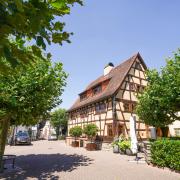In the latest of his series of features for Devon Life on Great Devonians, IAN L. HANDFORD tells the tale of three generations of Templers, entrepreneurs who changed transport methods twice in order to become rich

Our story starts with James Templer, sixth child of an Exeter tradesman who in 1722, aged 14, became an apprentice for an Exeter architect before running away to find success elsewhere.
Having arrived in Plymouth and boarded a ship bound for Madras he commenced a career assisting with the building of the Madras docks. Ten years later he returned to Plymouth a wiser and richer man. Having entered into a partnership with two others the three men tendered and won the right to design and construct docks at Plymouth for the Government.
James in his youth had known Exeter quite well, although could not recall the derelict estate of Stoford Lodge at Stover. Having purchased the estate and rebuilt the lodge, his home became Stover House and estate at Teigngrace.
Having married one of his partner’s sisters, Mary Parlby, in 1747, they produced seven children, the first two sons being James and George. Mary died in 1780 and sadly James survived her by only two years, dying on March 4th 1782.
Having inherited, James junior, who for 30 years had been working in the Crown Office in London, returned home to complete his father’s granite-built house as well as a church.
Seven years later he had the idea of creating a transport system that would enable clay to be shipped by canal barges. Clay mining was at its height at this time – and pottery and porcelain products were the new wonder of the age.
James planned to construct a canal from Jewsbridge near Heathfield to Bovey Tracey and Chudleigh as he could see a time that the horse and cart would be outdated. Construction commenced in 1790 and having spent over £1,000 James was forced to petition Parliament for a Bill to enable him to mortgage the family estate for £5,000 to continue his vision to complete a canal-based transport system.
His canal passed under the Newton Abbot to Exeter road, which required the No 4 lock to lift its water six feet, nine inches. It needed walls of granite, the high cost of which was probably why only a single pen was constructed.
With the new transport system in place, James decided to retire. For eight years Josiah Wedgwood & Sons and the Pike Clay Company had sole use of the canal which saw the asset trebling its value by the year 1800.
After James’ death in 1813 George inherited. Work was not on his agenda; he preferred music, poetry and leisurely pursuits, yet in time the family entrepreneurial genes kicked in with another idea. Being the preferred material of architects around the country, granite was used as a facing material on most large buildings. The cut stone was transported by horse and cart, a most laborious and dangerous task, especially when brought from Dartmoor to Teignmouth.
George’s new vision was to build a tramway made of granite. The hewn out tracks would guide the horse driven carts on their descent from Haytor to the Teign more quickly and safely. He dismissed iron rails as being far too costly and likely to break.
Choosing to use only family money, his tramway of eight-and-a-half miles became a “granite road” able to carry five foot blocks of cut stone on wagons still drawn by horses. The tramway opened on September 16, 1820 and cost £30,000.
By 1825 the Devon Haytor Quarries Company was formed, capitalised at £200,000. Now the family, shippers of clay by canal, would move granite by both tramway and canal. All products were shipped by sea from Teignmouth and Dartmoor granite was used to build the British Museum, National Gallery, Covent Garden and memorials and monuments around the United Kingdom. George again settled to become a man of leisure.
In December 1843 George was killed in a hunting accident which ended the long connection of the family with Teigngrace. Today only Templer Way, a walkers’ trail from Haytor to Teignmouth, survives to remind us of the extraordinary history.
Next month: The profits of the Wills-Woodbine Tobacco company saw benefactors in Torbay creating a hospital that later would ban smokers!



























